I consider myself an inquisitive traveler who looks past the obvious, peers down side streets, and questions the “why” of a building, sign, or name. I thought I knew Berlin very well.
Then I met Peter Graham, an avid historian who leads tours in Berlin to show people the damage from WWII that can still be found 80 years after the war. And I discovered that even a city you may know well can hide secrets of its history right under your nose.
Those holes on the sides of some buildings? Shrapnel damage from World War II. Large pock marks on sidewalks or bridges? Warfare damage still visible after the Battle for Berlin in spring 1945. That dip in a city square? That’s where the Germans buried a tank during a battle with the Soviets.
And that’s just the start of what you can find once you open your eyes – and especially after you take a Berlin Battle Damage tour with Graham. Splitting his time between Ireland and Berlin, Graham must wear out his shoes pounding the sidewalks all over Berlin’s 344 square miles and 12 boroughs to find old etchings, signs, and damage on centuries-old streets and bridges.
“People don’t realize what happened on these streets,” Graham told me. “I want them to open their eyes a bit and not just go about their daily business.”
Michael and I took a four-hour walking tour with Graham that covered several miles through the Schoeneberg district, focusing on the Soviet advance during the battle. This is not just a history walk, however. What makes his tours so fascinating are the old photos he shows. They aren’t often of great quality since some come from clips he’s taken from decades-old Soviet newsreels or are dug out of dusty library archives.
There you stand on a street corner or city square, while Graham fishes around in his leather shoulder satchel, extracts a photo, and holds it up. Next thing you know, you are looking at the buildings where you are standing, some partly collapsed, maybe a pile of rubble nearby, with perhaps Soviet soldiers or German tanks in the scene. Suddenly, you are living the battle that happened decades ago where you are now standing – a place you may have dashed through before without a second thought. The whole city takes on a new meaning.
“It’s nice to see people make the connection between modern Berlin and the Berlin of the past when they compare the photos with the scene as it is today,” said Graham.
One of our first stops on our tour—one of several he does—was the city hall in the district of Schoeneberg. We admired the architecture and read the plaque outside commemorating U.S. President John F. Kennedy and his words on this site that echoed around the world: “Ick been ein Berliner.”
Then we looked closer: The exterior stone walls were pockmarked from bullets. We stepped inside the city hall, where he held up a photo clipped from a Soviet newsreel showing soldiers racing up the stairs in front of us.
At another stop in Schoeneberg, Graham gathered the group on a small city square and held up a photo. There, in front of us, was the same tree we were all standing next to – 80 years after gunfire ricocheted around it. Graham pointed out the same buildings in his photos -- then we turned around, and he showed us the slight dip in the middle of the Kaiser-Wilhelm Square where we stood. Turns out an inoperable German panzer had been buried there during the battle to be used as a gun turret. The Soviets then fully buried it – and it wasn’t discovered until a renovation of the plaza decades later.
Sometimes, Graham will also make stops that have less to do with battle damage as they do with war or Nazi history. We stopped at what today is called the Königskolonnaden, a row of glamorous columns on Potsdamer Street with a greenspace down the middle and a park behind it. This is where residents walk their dogs and enjoy a beer on a hot day.
Years ago, Michael and I had stopped there, but weren’t fully aware of its significance: This was the sight of the “Volksgerichtshof,” or People’s Court, a sham Nazi court in Berlin that tried those accused of treason, including many resistance fighters like Sophie Scholl. The most notorious of those trials was for those who plotted to kill Hitler in the infamous but failed July 20, 1944, assassination attempt.
Now that I’ve taken Graham’s tour, I’m even more aware of pockmarks, holes, and dings in Berlin’s buildings. I may stop and stare at a historic façade of a popular museum or a bridge that turns into a social hangout in the summer. But instead of sipping a beverage or lounging in the sun, I imagine German or Soviet soldiers streaming by it or across it, knowing their lives were in danger. Yet here I am, standing peacefully in that same place now.
Today, Berlin is no longer in ruins. Like many modern cities, though, it still whispers its historic secrets … if you stop to look closer.
“In a modern city, everybody is rushing around.” Graham said, “You need to stop and look.”
Story by Therese Iknoian. See more photos by Therese Iknoian here. They're all available for purchase as gifts or just for you! Substack subscribers get 25% off any order!
Peter Graham offers his Berlin Battle Damage tours from approximately March to October. The best way to find out about tours is to go to his Facebook page or through Messenger – he promises a website will be launched soon. At the time of this writing, his tours were on a donation basis with a suggested donation of about EUR 20 per person.

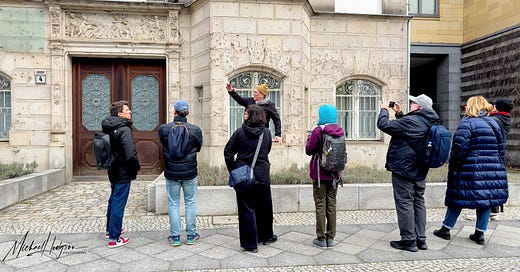



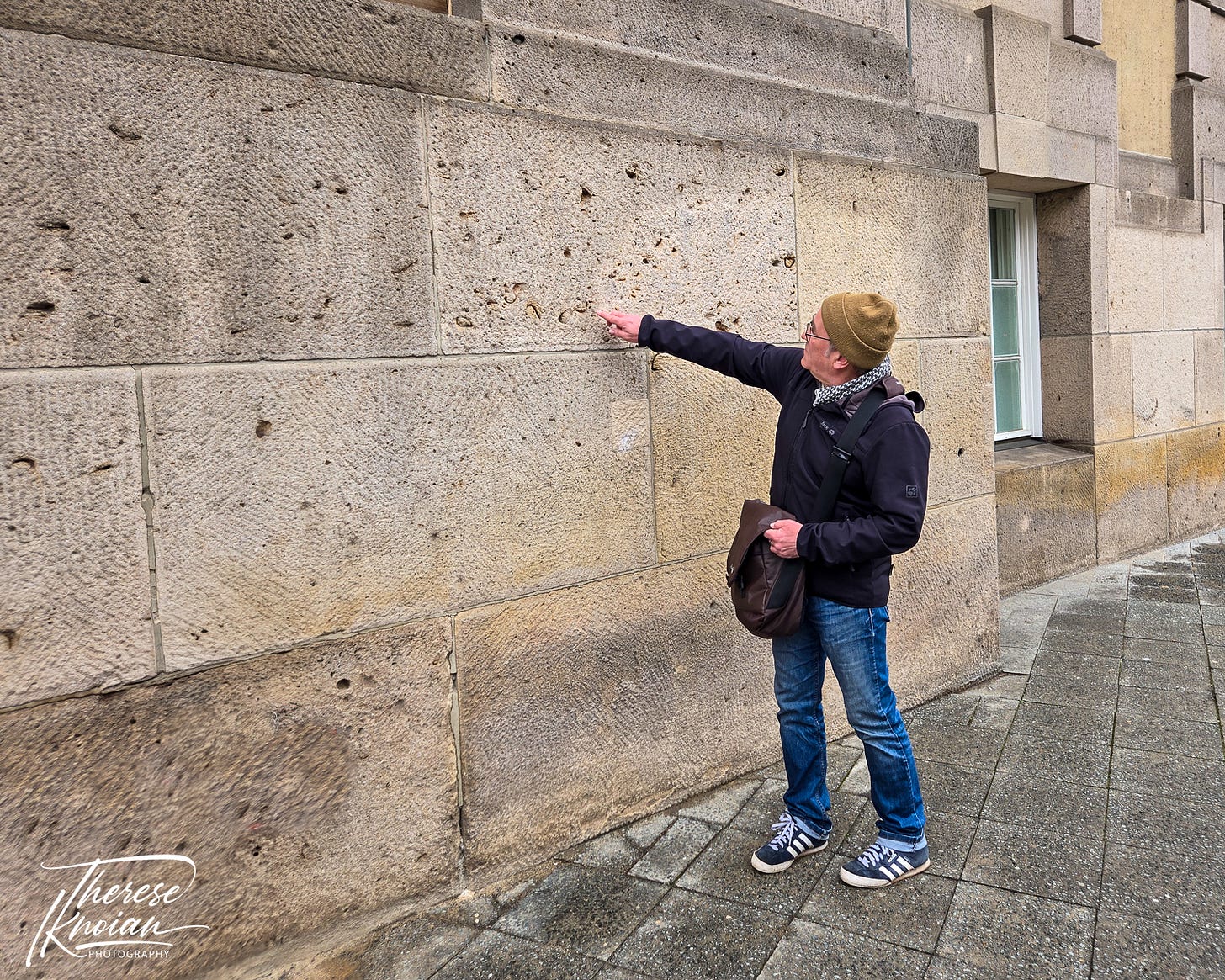
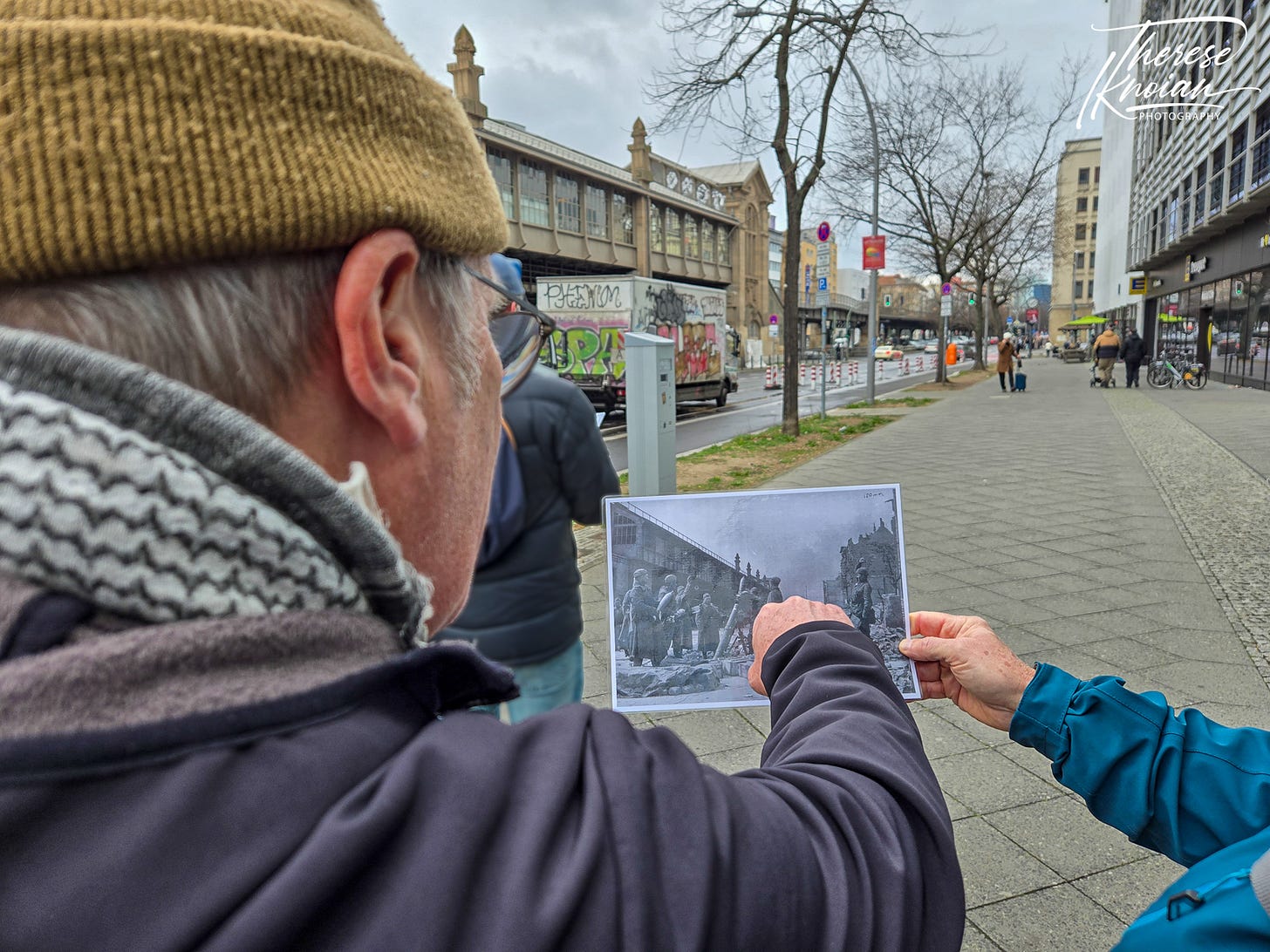
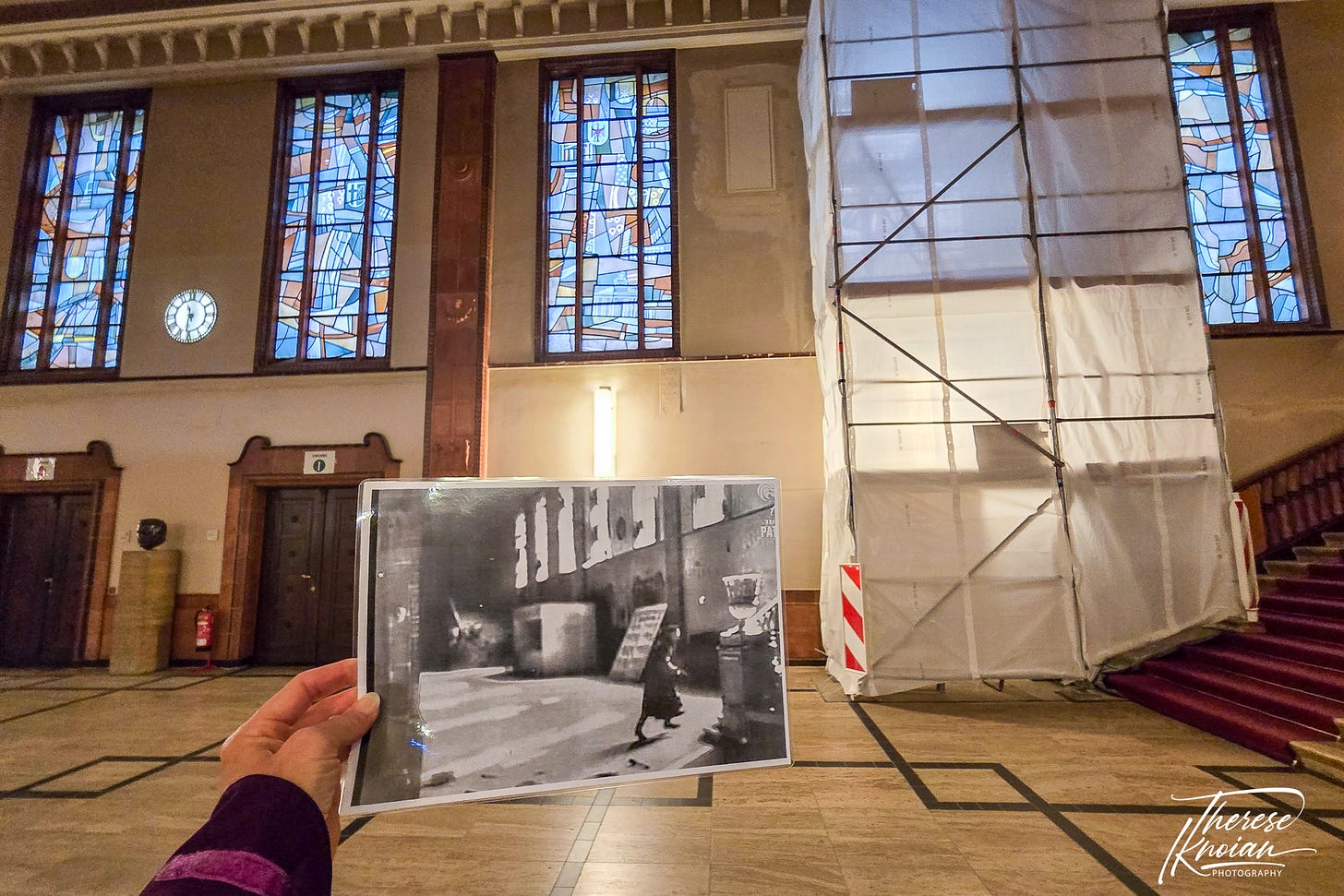
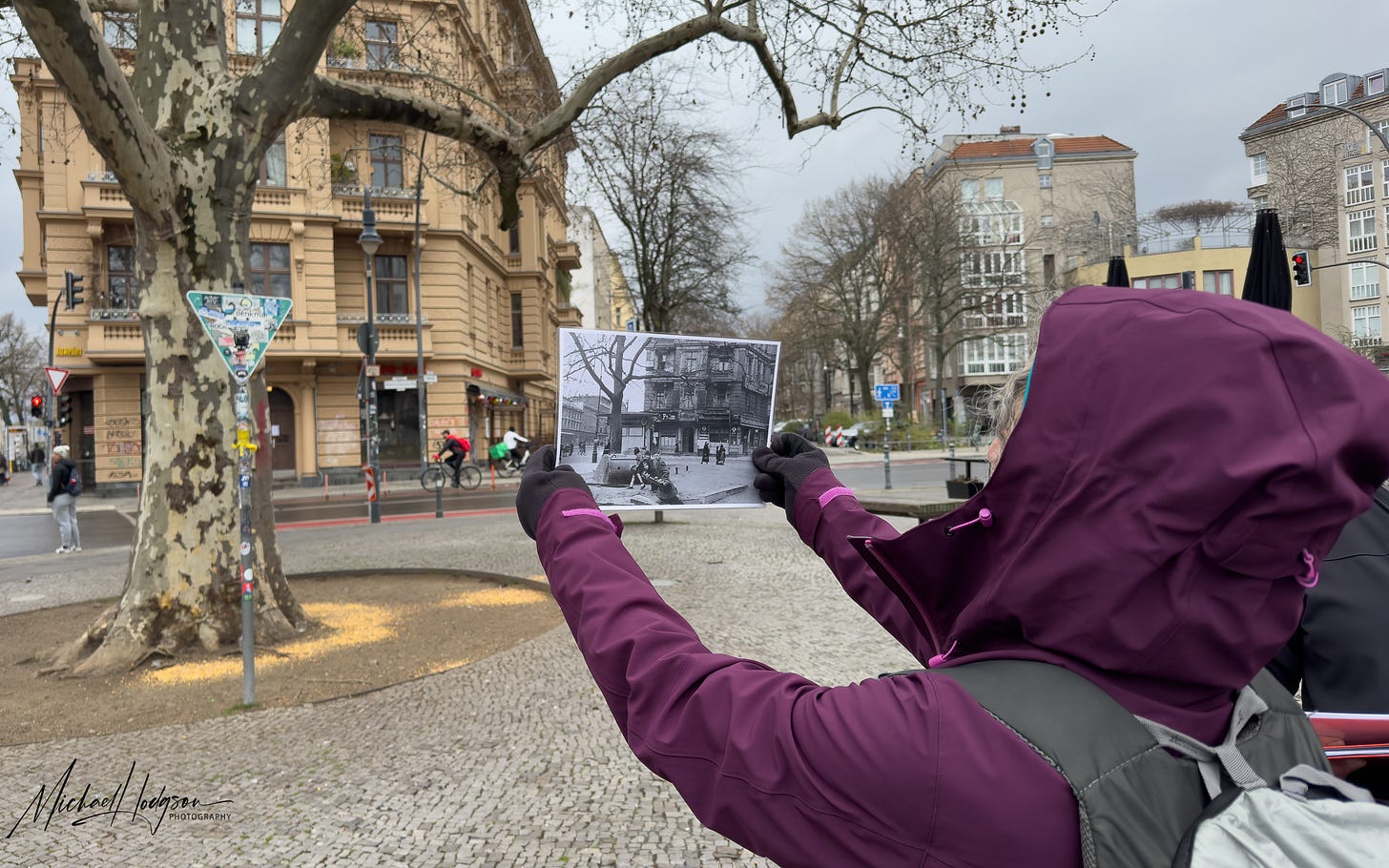
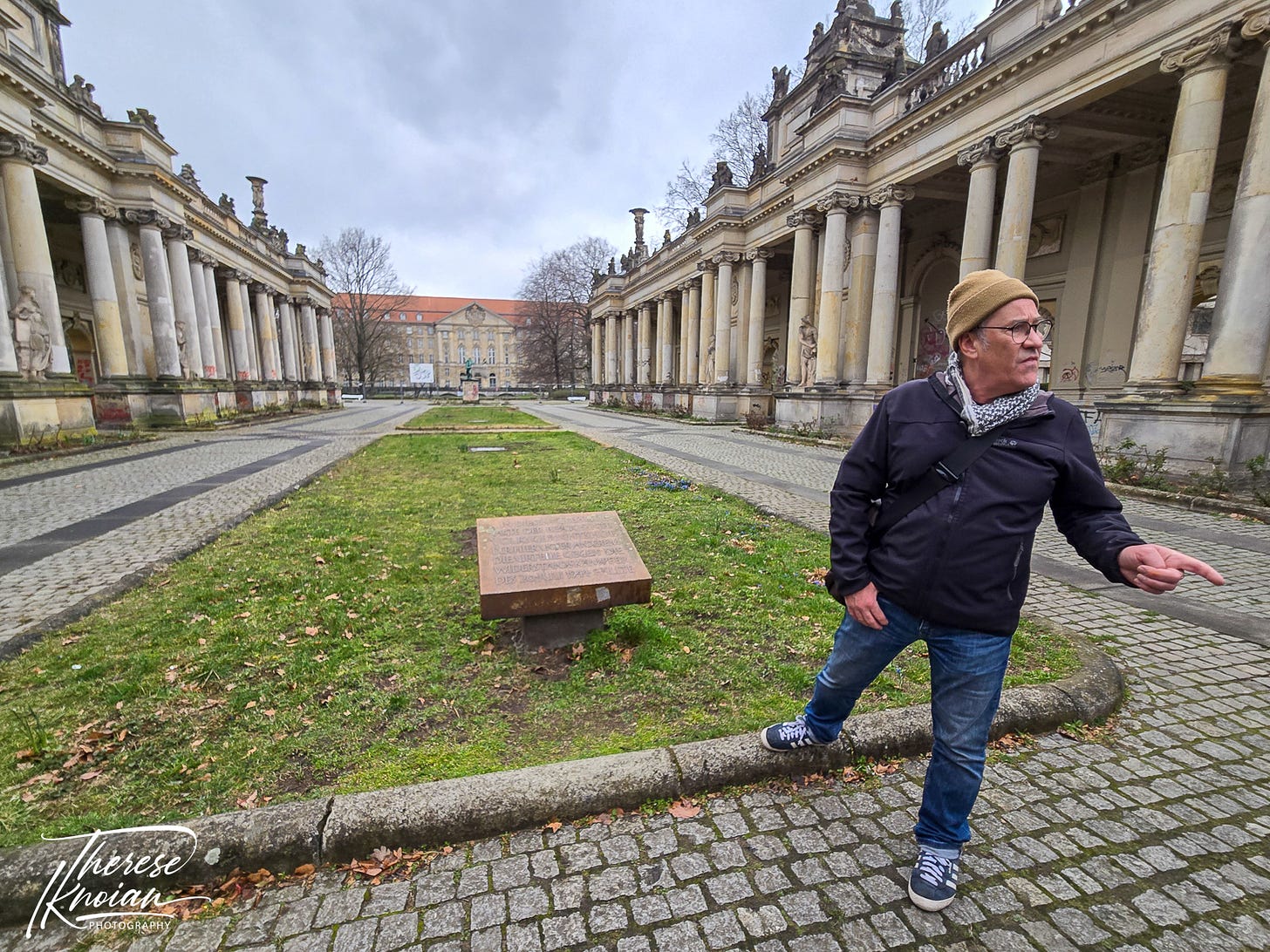
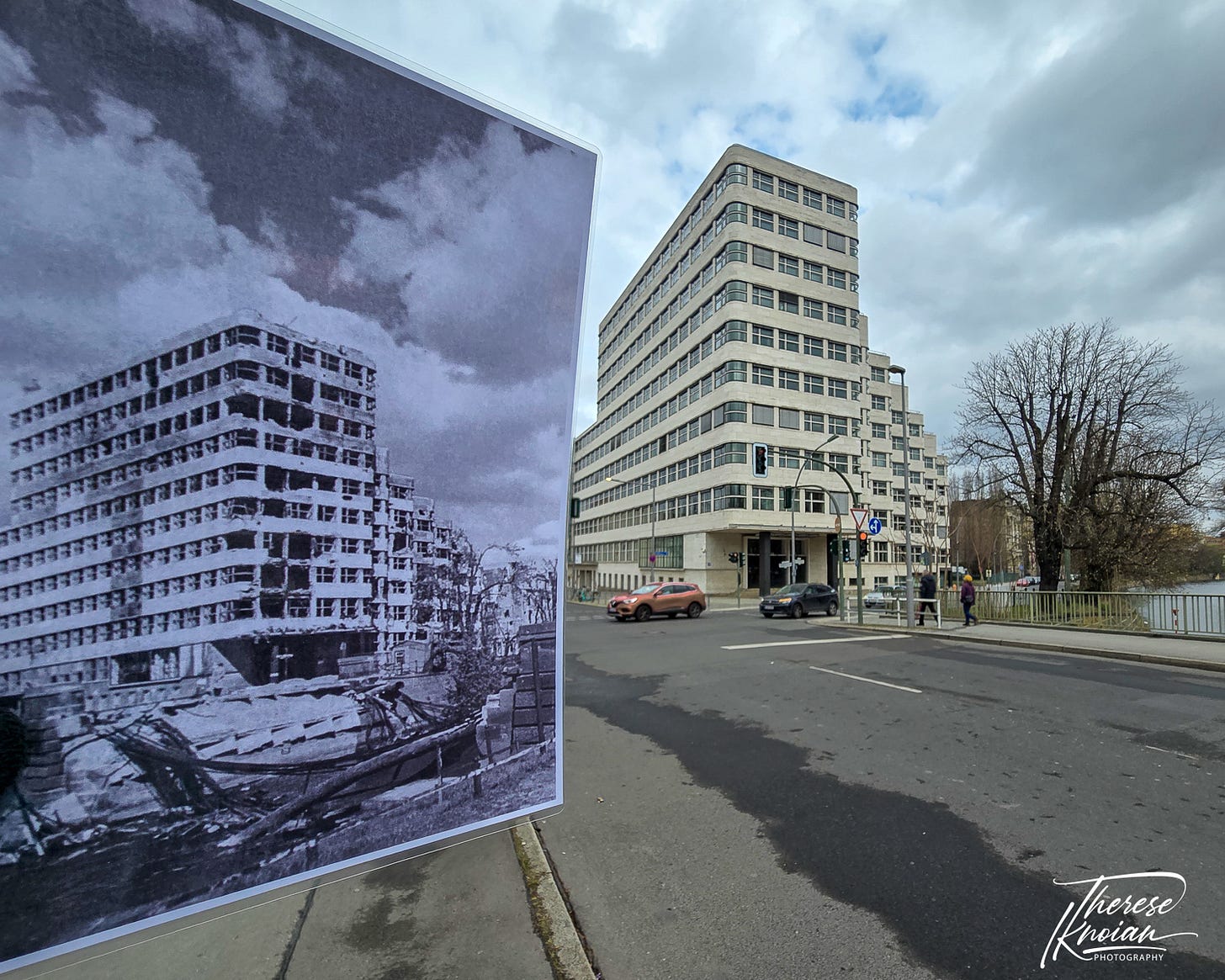
Peter sounds like my kind of tour guide. My son and I love visiting WWII sites and Berlin is high on our list.